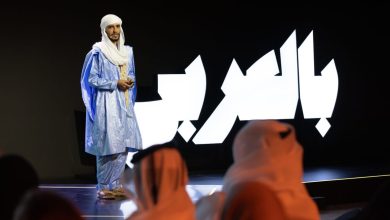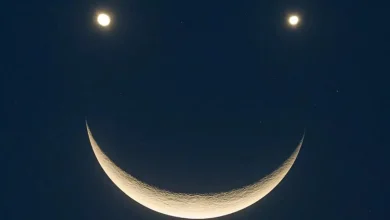Museum of Islamic Art to Reopen Oct. 5
إعادة افتتاح متحف الفن الإسلامي في 5 أكتوبر المقبل
QNA
Doha: Qatar Museums announced that the iconic Museum of Islamic Art (MIA) will reopen to the public on 5 October 2022 following a facilities enhancement project and the reimagination and reinstallation of its permanent collection galleries.
One of the worlds premier institutions of Islamic art and the first world class museum in the region, MIA will re-open in time for the influx of visitors to Doha for the FIFA World Cup Qatar 2022 and provide a more accessible, engaging, and educational experience for guests.
More than 1,000 objects many newly conserved or acquired will be displayed in the Museums permanent galleries for the first time, alongside the masterpieces for which the MIA has long been recognized. MIA will also introduce a new section on Islam in Southeast Asia and focus on the connection between different cultures through exhibits on the trade of commodities and the exchange of ideas across the Islamic World and beyond.
In comments, HE Chairperson of Qatar Museums Sheikha Al Mayassa bint Hamad Al-Thani said: “The opening of the Museum of Islamic Art was a transformational moment for Qatar, marking the nations emergence as a new global cultural destination and paving the way for establishing other major museums and cultural institutions in the region.” “We are excited for locals to have a chance to rediscover the museum, and we invite visitors who are coming to attend World Cup matches to experience this foremost expression of our heritage and culture,” HE Sheikha Al Mayassa added.
MIA Director Dr. Julia Gonnella said, “I am honored to lead this extraordinary institution into its next chapter. This enhancement will benefit generations of visitors, providing an even more meaningful experience and allowing guests to explore the rich vast history of the Islamic World as told through our unparalleled collection.” The new visitor experience begins on the ground floor with an introduction to the museum itself, with an entirely novel space dedicated to the making of MIA. The former Majlis has been transformed into an immersive gallery for visitors to learn the fascinating story of I.M. Pei and his daring design for the now iconic museum.
The first gallery on level two serves as an introduction, showcasing some of MIAs greatest artefacts including the Blue Quran, the Cavour Vase, the Varanasi necklace, the Ramayana manuscript for Hamida Banu Begum, and the Franchetti tapestry, and providing an overview of the topics to come, while also illustrating the wide variety of materials used in Islamic art across the vast geographical scope and broad time scale covered. This is followed by an exploration of the origins and spread of Islam, with galleries devoted to the Quran and its history, the Muslim Community (umma), learning and education within Islamic cultures and finally an examination of the expansion of Islam to both Eastern and Western lands.
In addition, visitors will follow the historical events that led to the establishment of the caliphate, its expansion eastward into Iran and Central Asia, the development of courtly culture in Al-Andalus, and the survival of the Islamic heritage in post-Islamic Spain.
In their new arrangement, these galleries also illustrate the wide variety of materials used in Islamic art, including carpets and textiles, manuscripts, ceramics, wood, ivory, metalwork, stone and glass, spanning Spain and North Africa to the Far East from the earliest Islamic period to the 20th century CE.
Highlights from these galleries include early Hijazi Quran fragments, the sitara of the Holy Kaba, the Moroccan arch, a precious copy of al-Sufis treatise on the fixed stars, the Abbasid blue-and-white bowl, the Seljuq stucco panel, the Doha Hind, and the post-Islamic Spanish ceiling.
Level three takes visitors through the Islamic World from the Mediterranean in the West to the Indian Ocean in the East and beyond, focusing on the arts and societies of the 11th to 19th centuries. The main galleries focus on the three Gunpowder empires: the Ottomans (ruling from Turkey over much of the Arab lands), the Safavids (Iran), and the Mughals (South Asia), whose historical and artistic legacy continues to have an enormous impact on the identities of the populations in these regions today.
On view are precious carpets from the Safavid period, MIAs impressive collection of Mughal jewels, and a beautiful display of Ottoman Iznik pottery and tilework. These are accompanied by displays of Islamic manuscripts and arms and armor, concluding with exciting new galleries dedicated to China and Southeast Asia, the latter a subject not typically presented in Islamic art museum, reminding visitors that the region today is home to the largest Muslim community worldwide.
Artefacts from the Cirebon shipwreck, jade vessels, Indonesian gold jewelry and textiles are among the key objects on view. Level three also explores hospitality showcasing a spectacular and newly conserved 19th century Syrian interior from a Damascus home that served as a multifunctional microcosm of Ottoman life.
The newly created “Family Trail” is a key component of the gallery refurbishment to engage young visitors on topics that relate to their own lives and experiences. Utilizing new technologies, interactive displays and multi-sensory applications further engage visitors, children and adults alike, throughout the museum.
Adding to the visitor experience, and complementing the many incredible artefacts and artworks on display, guests will encounter images and films of different architecture and sites from the Middle East, listen to the Holy Qur?an and Arabic and Persian poetry, as well as music from Al-Andalus; they can learn about the different fragrances of herbs and spices that travelled long distances across the Islamic World; and will be able to get a sense of the different materials and decorations used in the arts over time.
The enhanced and expanded experience ease visitor flow to serve a larger audience with a reframed entrance and upgraded cafes and retail locations. All improvements to the building are in keeping with I.M. Peis vision. MIA once again collaborated with the French interior design and architecture firm first retained by I.M. Pei, Wilmotte & Associes, throughout the reinstallation process.
To celebrate its reopening, Qatar Museums and Thames & Hudson have co-published the beautifully illustrated 500+ page catalogue dedicated to the history and collection of the Museum of Islamic Art.
Opening on 26 October 2022 on MIAs Temporary Exhibition Gallery, Baghdad: Eyes Delight will introduce and celebrate the significance of Baghdad under the Abbasid dynasty (750-1258) and its influential impact in the region and around the world up until today. The exhibition will highlight Baghdad as a political, economic, and intellectual hub during a period that was one of the most innovative in world history. It will also explore Baghdads role as a great intellectual and artistic city that has attracted scholars and philosophers from around the world, and document the citys tremendous resilience in face of war, violence, and destruction through its history. The exhibition highlights how Baghdad continued to endure, building on the memories of its Abbasid heritage. It will pay homage to the citys “glorious” past, concentrating on the Baghdad of the 20th century, focusing especially (but not only) on the period between the 1940s and 1970s when Baghdad once again became a thriving place with vibrant city life.
The display will comprise 160 objects, including loaned works from Biblioteca Apostolica Vaticana, Vatican City; Louvre Museum, Paris; The Metropolitan Museum of Art, New York; Museum of Fine Arts, Boston; Museum of Islamic Art (SMB), Berlin; Oriental Department, State Library (SBB), Berlin; Bavarian State Library, Munich; The David Collection, Copenhagen; Benaki Museum, Athens; Barjeel Art Foundation, Sharjah; Dia Al-Azzawi Collection, London; The British Library, London; and Chester Beatty, Dublin. An immersive exhibition design includes scenographic elements, including a depiction of the River Tigris on the floor of the exhibition that serves to connect the different themes.
Baghdad: Eyes Delight is presented as part of Qatar-MENASA 2022 Year of Culture and jointly curated by Dr. Julia Gonnella, Director, Museum of Islamic Art and the museums curatorial team: Dr. Mounia Chekhab Abudaya, Dr. Tara Desjardins, Nicoletta Fazio and Simone Struth. The exhibition will be accompanied by a fully illustrated exhibition catalogue with important contributions by distinguished international scholars.
Presented in conjunction with the exhibition, City of Mirages: Baghdad, 1952-1982 on MIAs level four will spotlight built and unbuilt work by 11 architects.
The MIA, an architectural tour de force designed by internationally acclaimed Pritzker Prize-winning architect I.M. Pei, which opened in 2008, was the first institution opened by Qatar Museums. Prominently positioned on its own reclaimed island on the Corniche, specifically chosen by Pei, the Museum is a beacon for Islamic arts and a platform for international dialogue and exchange bridging past and present, East and West.
قنا
الدوحة: أعلنت متاحف قطر أن متحف الفن الإسلامي، سيعاد افتتاحه في حلته الجديدة للجمهور، في 5 أكتوبر المقبل ، بعد مشروع تجديد وتطوير شامل، وإعادة تصور وتركيب صالات عرض مجموعته الدائمة.
ويُعد متحف الفن الإسلامي إحدى المؤسسات الرائدة في الفن الإسلامي في العالم، وأول متحف عالمي المستوى في المنطقة. ويعاد افتتاحه في الوقت الذي يتوافد فيه الزوار إلى الدوحة لحضور مباريات كأس العالم FIFA قطر 2022، حيث يمنح المتحف ضيوفه تجربة تفاعلية وتعليمية سهلة الوصول.
ويقدّم المتحف أكثر من ألف قطعة فنية مقتناة ومحفوظة حديثًا، يعرض العديد منها لأول مرة، إلى جانب التحف الفنية التي اشتهر بها متحف الفن الإسلامي منذ فترة طويلة. مع إضافة قسم جديد عن الإسلام في جنوب شرق آسيا، يركّز على العلاقة بين الثقافات المختلفة من خلال المعارض التي تتناول تجارة السلع، وتبادل الأفكار عبر العالم الإسلامي وخارجه. وقد نظمت صالات العرض وفقًا للموضوعات التاريخية والثقافية، والفترات الزمنية، والنطاقات الجغرافية، وتكشف عن عظمة تقاليد ومهارة الصنعة الإسلامية.
وأكدت سعادة الشيخة المياسة بنت حمد آل ثاني، رئيس مجلس أمناء متاحف قطر أن:” افتتاح متحف الفن الإسلامي مثّل نقطة تحول بالنسبة لدولة قطر، حيث كان إيذانًا بظهور الدولة كوجهة ثقافية جديدة في المنطقة، ومهّد الطريق لإنشاء متاحف ومؤسسات ثقافية أخرى في المنطقة.” وأضافت: “تغمرنا السعادة لأن الجمهور المحلي سيحظى بفرصة استكشاف المتحف مرة أخرى، وإننا ندعو الزوار القادمين لحضور مباريات كأس العالم، أن يشاركوا في إحدى أهم التجارب التي تعبر عن تراثنا وثقافتنا”.
ومن جانبها، قالت الدكتورة جوليا?غونيلا،?مدير متحف الفن?الإسلامي:” أتشرف بقيادة هذا المتحف الاستثنائي في انتقاله إلى مرحلة جديدة من مسيرته. وسيعود مشروع التجديد هذا بالفائدة على أجيال من الزوار، ويوفر لهم تجربة أكثر عمقًا، يتعرفون من خلالها على التاريخ الحافل للعالم الإسلامي، كما تحكيه مجموعاتنا الفريدة.” وأوضحت متاحف قطر أن إعادة افتتاح متحف الفن الإسلامي تندرج تحت مبادرة /قطر تُبدع/، الحركة الثقافية الوطنية التي تنشط على مدار العام، والتي ترعى الأنشطة الثقافية في الدولة ، وتروج لها، وتحتفي بتنوعها، جامعةً بذلك المواطنين والمقيمين فيها والجماهير العالمية بالصناعات الإبداعية في البلاد.. مشيرة إلى أن معرض/بغداد – قرة العين/ الذي يقام في الفترة من (26 أكتوبر 2022 إلى 25 فبراير 2023)، يشكّل بصمة فارقة ويسلط الضوء على إحدى أكثر المدن تأثيرًا في العالم، ويحتفي بها، نظرًا لتراثها كعاصمة للخلافة العباسية العظيمة / 750 م – 1258 م /، وكذلك في القرن العشرين، حيث أصبحت المدينة من جديد مركزًا مزدهرًا للفنون والثقافة والتجارة.
ودعت متاحف قطر الزوار لاكتشاف معالم التطوير والتجديد التي تبدأ من الطابق الأرضي بمقدمة تمهيدية عن المتحف نفسه، تروي سيرة إنشاء متحف الفن الإسلامي. حيث تم تحويل المجلس السابق إلى معرض يوفر تجربة آسرة للزوار، يتعرفون من خلالها على القصة الرائعة للمهندس “آي إم باي”، وتصميمه المبهر للمتحف، الذي يمثل معلماً لافتًا الآن.
كما تعد قاعة العرض الأولى في الطابق الثاني بمثابة محطة تعريفية، تَبرُز فيها بعض أعظم القطع الأثرية في متحف الفن الإسلامي، بما في ذلك المصحف الأزرق ، ومزهرية الكافور، وقلادة فاراناسي، ومخطوطة رامايانا الخاصة بحميدة بانو بيغوم، وقماش فرانشيتي، ويقدم لمحة عامة عن الموضوعات المقبلة، مع تسليط الضوء على مجموعة واسعة من المواد المستخدمة في الفن الإسلامي، عبر نطاق جغرافي وزمني واسع.
ويتبع ذلك استكشاف لبدايات الإسلام وانتشاره، مع صالات عرض مخصصة للقرآن وتاريخه، وللمجتمع المسلم، والتعليم والتربية في إطار الثقافة الإسلامية، ومن ثم استعراض انتشار الإسلام في كل من الشرق والغرب.
بالإضافة إلى ذلك، سيكون الزوار على موعد مع متابعة الأحداث التاريخية التي أدت إلى إقامة الخلافة الاسلامية، وتوسعها شرقا في إيران وآسيا الوسطى، وتطور ثقافة البلاط في الأندلس، واستمرار التراث الإسلامي في إسبانيا ما بعد الإسلام.
تُبرز هذه المعارض في ترتيبها الجديد أيضًا مجموعة متنوعة من المواد المستخدمة في الفن الإسلامي، بما في ذلك السجاد، والمنسوجات، والمخطوطات، والخزف، والخشب، والعاج، والمشغولات المعدنية، والحجر، والزجاج، والتي تمتد من إسبانيا وشمال إفريقيا إلى الشرق الأقصى، منذ أقدم العصور في الإسلام وحتى القرن العشرين الميلادي.
وتشمل أبرز المعروضات أجزاء من القرآن الحجازي العتيق، وستار الكعبة الشريفة، والقوس المغربي، ونسخة ثمينة من كتاب صور الكواكب الثابتة للصوفي، والجفنة العباسية باللونين الأزرق والأبيض، ولوحا من الجص السلجوقي، وأيلة الدوحة، والسقف الإسباني بالطراز الفني لما بعد الإسلام.
أما الطابق الثالث فيأخذ الزوار عبر العالم الإسلامي من البحر الأبيض المتوسط غرباً إلى المحيط الهندي شرقاً، مع التركيز على الفنون والمجتمعات بين القرنين الحادي عشر والتاسع عشر. وتركز قاعات العرض الرئيسية على إمبراطوريات “البارود” الثلاث: العثمانيون الذين حكموا من تركيا جزءًا كبيرا من الأراضي العربية، والصفويون من إيران، والمغول من جنوب آسيا، الذين يملكون تراثًا تاريخيًا وفنيًا ذا تأثير كبير، لا يزال يطبع هويات السكان في هذه المناطق حتى اليوم.
ويوجد من ضمن المعروضات سجاد ثمين من العصر الصفوي، ومجموعة ساحرة من مجوهرات المغول بمتحف الفن الإسلامي، وعرض جميل للفخار والبلاط الإزنيقي العثماني. وترافق ذلك معروضات لمخطوطات إسلامية وأسلحة ودروع، تنتهي بمعارض جديدة ومثيرة مخصصة للصين وجنوب شرق آسيا، وهذا الأخير موضوع لا يُقدّم عادةً في متاحف الفن الإسلامي، حيث يعيد لأذهان الزوار أن المنطقة اليوم هي موطن لأكبر المجتمعات الإسلامية عبر العالم.
وتشمل القطع الأساسية المتاحة في العرض قطعا أثرية من حطام سفينة سيريبون، وأواني اليشم، ومجوهرات الذهب الإندونيسي والمنسوجات. وتتجلّى أيضا في الطابق الثالث مظاهر كرم الضيافة – من خلال عرض لتصميم داخلي بديع من منزل دمشقي في سوريا جرى ترميمه حديثًا، يعود للقرن التاسع عشر- وهو بمثابة عالم مصغر متعدد الوظائف للحياة العثمانية.
ويعدّ “المسار العائلي”، الذي أُنشئ حديثًا، مكونًا رئيسيًا في أعمال التجديد التي شهدتها صالة العرض، ويؤدي استخدام التقنيات الحديثة، والعروض التفاعلية، والتطبيقات متعددة الحواس، إلى منح الزوار والأطفال والكبار تجربة مميزة.
واستكمالًا للعديد من القطع الأثرية والروائع الفنية المتاحة في العرض، سيطّلع الضيوف على صور وأفلام بقوالب هندسية معمارية متنوعة، ومواقع أثرية مختلفة من الشرق الأوسط، وسيُصغون إلى تلاوات من القرآن الكريم وقراءات من الشعر العربي والفارسي، ويستمعون للموسيقى الأندلسية؛ كما يمكنهم التعرف على روائح مختلفة للأعشاب والتوابل التي سافرت لمسافات طويلة عبر العالم الإسلامي؛ وسيتمكّنون من الاطلاع على مواد وزخارف مختلفة كانت تُستخدم في الفنون على مدار الزمن.
وتُسهم التجربة الواسعة التي طالها التحسين لمتحف الفن الاسلامي في تسهيل توافد الزوار لخدمة أكبر عدد من الجمهور، من خلال مدخل معاد تشكيله، ومقاهٍ، ومواقع بيع بالتجزئة في حلل جديدة. توافق جميع التحسينات التي أُجريت على المبنى رؤية المصمم “آي إم باي”.
واحتفاءً بإعادة الافتتاح، شاركت متاحف قطر ودار نشر /تايمز وهدسون/ في نشر كتالوج مصور للمتحف بشكل بديع، الذي يحتوي على ما يزيد عن 500 صفحة، والمخصص لتاريخ ومجموعة متحف الفن الإسلامي.
ويُفتتح معرض “بغداد – قُرَّة العين” في 26 أكتوبر 2022، في قاعة العرض المؤقتة بمتحف الفن الإسلامي. ويستكشف المعرض الأهمية التي حظيت بها بغداد في ظل الخلافة العباسية (750-1258)، ويحتفي بتأثيرها البالغ على المنطقة والعالم، وصولًا إلى يومنا هذا. ويسلّط المعرض الضوء على بغداد كمركز سياسي واقتصادي وفكري ازدهر خلال إحدى أكثر الفترات غِنىً بالابتكار في تاريخ العالم. كما يبيّن الدور الفكري والفني العظيم للمدينة التي استقطبت العلماء والفلاسفة من جميع أنحاء العالم، ويوثق قدرتها الهائلة على التعافي من جراح الحروب والعنف والدمار الذي حل بها عبر تاريخها، ويُبرز صمودها المستمر، بناءً على ما تختزنه من ذكريات تراثها العباسي. يستذكر المعرض ماضي المدينة “المجيد”، ويركز على الدور الذي لعبته المدينة في القرن العشرين، وعلى وجه الخصوص تلك الفترة الممتدة بين الأربعينيات والسبعينيات من القرن الماضي، التي شهدت استعادة بغداد لصورتها كمكانٍ مزدهر ونابض بحياة المدينة.
ويضم المعرض 160 قطعة، بما في ذلك أعمال مستعارة من متاحف ومكتبات ومؤسسات ثقافية دولية ويتضمن تصميم المعرض عناصر سينوغرافيا، بما في ذلك تصوير لنهر دجلة على أرضية قاعة المعرض، وذلك لخلق ربط بين الموضوعات المختلفة.
وينظم معرض “بغداد – قرة العين” في إطار العام الثقافي قطر- الشرق الأوسط وشمال إفريقيا وجنوب آسيا 2022، ويتولى التقييم الفني للمعرض كل من الدكتورة جوليا غونيلا، مدير متحف الفن الإسلامي، وفريق التقييم الفني في المتحف، ويضم: الدكتورة منية شخاب أبو دية، والدكتورة تارا ديجاردان، ونيكوليتا فايزو، وسيمون ستروث. ويرافق افتتاح المعرض إصدار كتالوج مصور بالكامل يتضمن مساهمات مهمة لباحثين دوليين بارزين.
ويقام معرض بغداد قرة العين بالتزامن مع معرض آخر بعنوان “مدينة السراب: بغداد 1952-1982” في الطابق الرابع من متحف الفن الإسلامي، حيث يسلط الضوء على الأعمال والتصاميم المعمارية لـِ 11 مهندسًا معماريًا عالمياً.
جدير بالذكر أن متحف الفن الإسلامي، هو إنجاز معماري استثنائي، صمّمه المهندس الصيني الأمريكي العالمي الشهير “آي إم باي”، الحائز على جائزة بريتزكر للهندسة المعمارية ، وافتُتح عام 2008، وهي أول مؤسسة افتتحتها متاحف قطر. ويقع المتحف في مكان بارز على جزيرة صناعية على الكورنيش. والمتحف عبارة عن منارة للفنون الإسلامية، ومنصة للحوار الدولي ومدّ الجسور بين الماضي والحاضر، وبين الشرق والغرب.




